Your cart is currently empty!
Beyond Red: The Chinese Palette–Imperial Turquoise 官窑
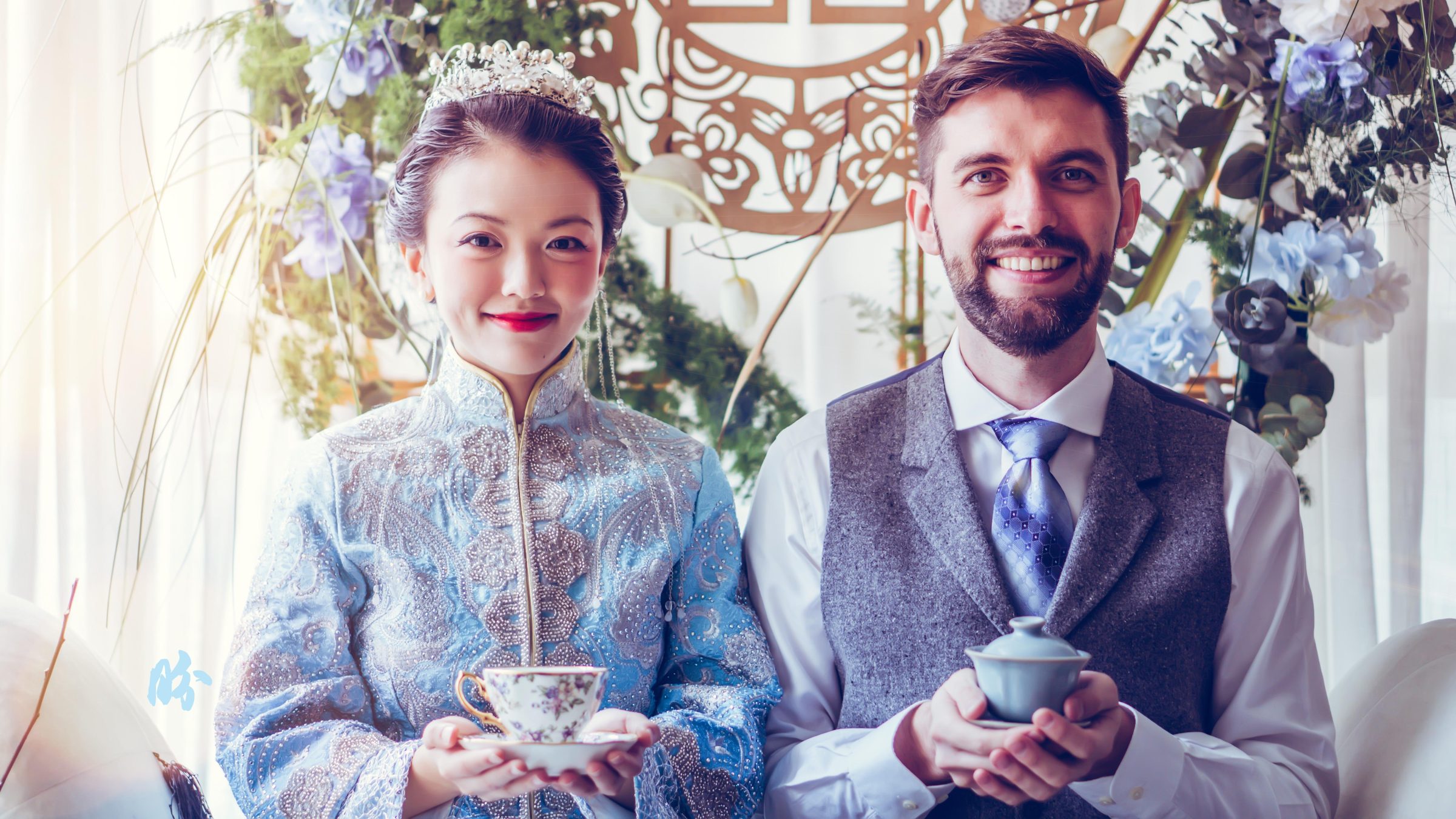
There’s Tiffany blue, and there’s Imperial Turquoise. One has a history of 200 years, the other has a history of almost 1000. And we’re going to talk about the more ancient one in this article.
Finally kicking off my latest collaboration that is done with my good pal from Blanc Studios which relooks at the traditional Chinese wedding aesthetics! In this series, I will reveal a new palette that is built on the finest of traditional Chinese taste–the Song dynasty glaze palette and a bit of jade history.
And yes, because Red, however beautiful and auspicious, is overrated.
We know how the Chinese love rankings, so this series will be based on the top 5 porcelain glaze and kiln during the Song dynasty–a period known for its incredibly fine and sophisticated taste, and the original inventors of minimalism.
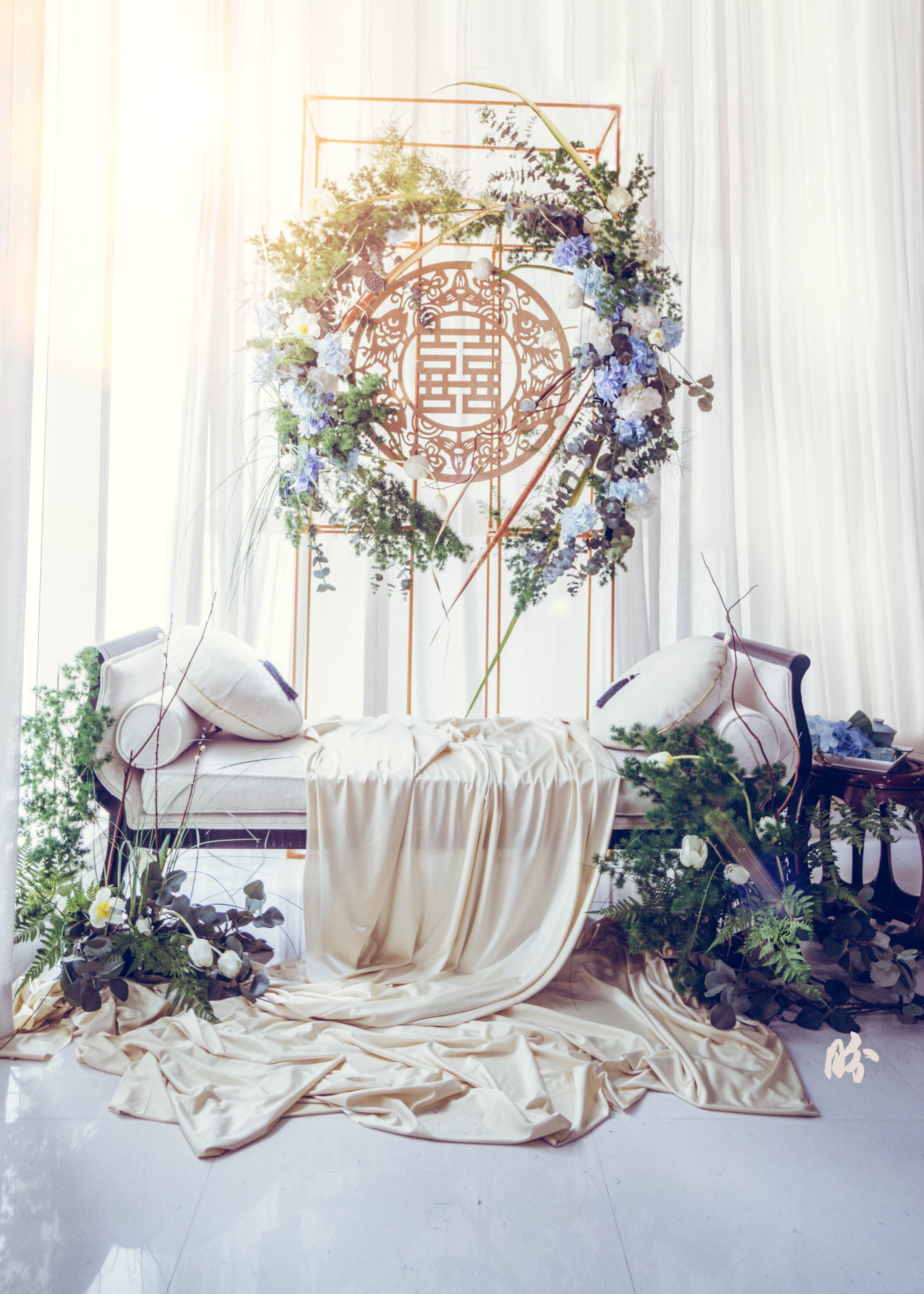
The Song dynasty (10-13th Century) was a period where great Chinese arts flourished and so many different types of porcelains were being created and produced in specialised kilns with unique glazes across the land. Out of the 170 ancient sites for porcelains in China, the Song dynasty ones occupied 130 sites which made up 75% of the total. That makes Song dynasty the most China period in China (haha!).

The term Guan ware is not unique to the Song dynasty, because it simply meant the imperial/official kiln where such wares are made. So you would have Guan ware from various era displaying a range of different characteristics. However, I’m going to focus on the Guan ware of Northern Song dynasty (the period was split into Northern and then Southern Song due to warfare).
Having the imperial brand meant that these wares were only supplied to the imperial family to be used, and not to be, under any circumstances, be owned by a commoner. The imperial kiln Guan ware production during the Song dynasty took it a step further and was personally managed and directed by the emperor himself!
The emperor with the highest artistic achievement in the entire history of China is generally believed to emperor Song Huizong who ruled China around the 11th century. He was really more of an artistic genius with impeccable taste, than a strategic ruler. Which is also why even till today, the Chinese still looked to the Song dynasty and in particular, the taste of emperor Song Huizong as the epitome of sophistication and finesse. In contrast, the Qing dynasty emperor Qianlong has often been mocked (especially in pop culture lately) for his opulent and ‘crude’ taste.
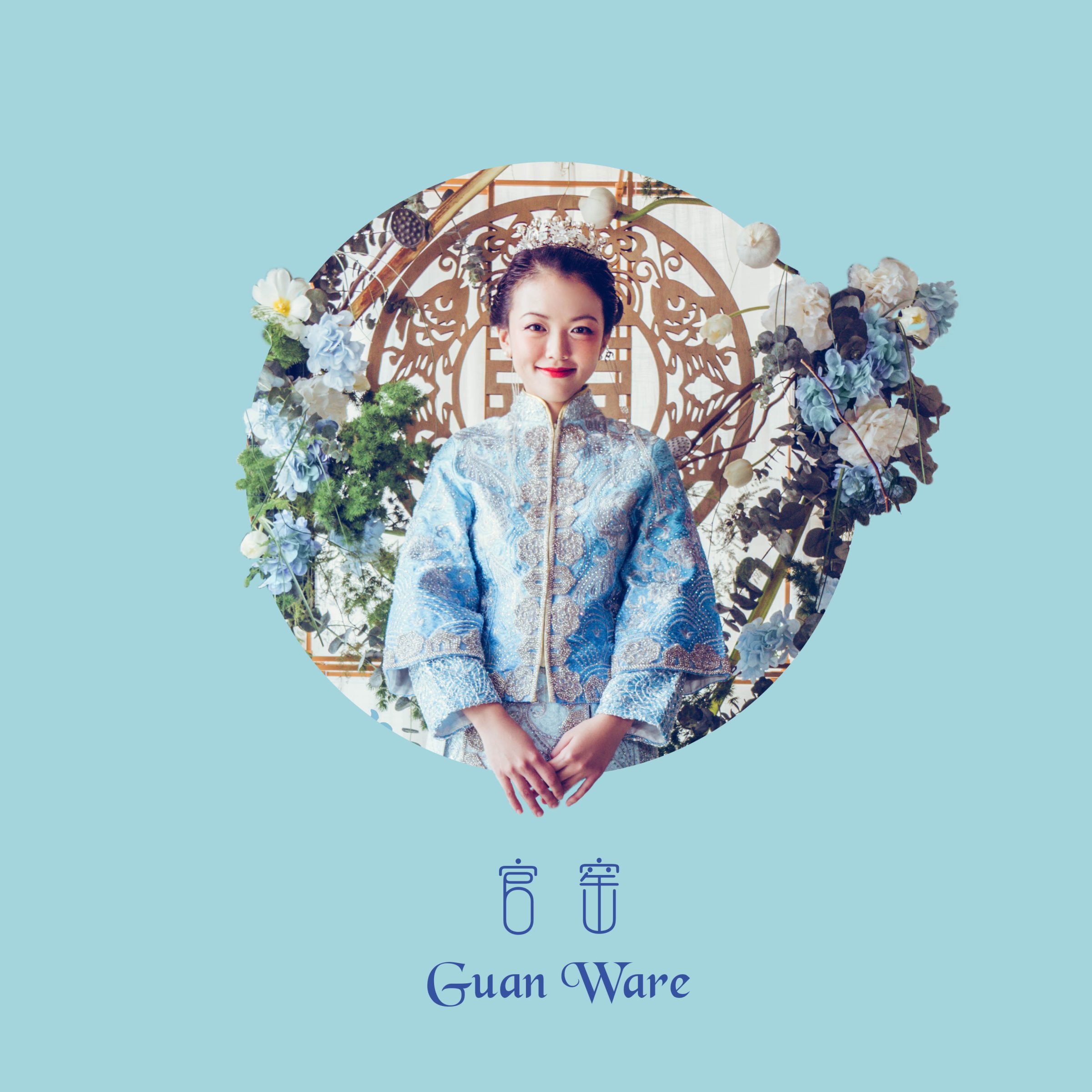
Unfortunately, good taste is not enough to run an empire.
This artist, calligrapher, poet, lyricist, collector, emperor, who excelled in everything artistic was hopeless at running a country. As a result, he lost half his empire to the Jurchens and lived in captivity for 9 years.
Not the most auspicious thing to say about weddings but… one cannot talk about Song dynasty art without mentioning this genius. After all, he was the one who brought us this imperial turquoise colour which precedes tiffany blue by about 700 years. Yeap, no biggies, just 700 years.

The Imperial Turquoise glaze of the Guan kiln (官窑) during the Song dynasty

Characterised by a thin porcelain base coated with a thick glaze of turquoise, the Guan ware was also marked by web-like crackling lines that spread across its entire surface. This aesthetic was personally designed by emperor Song Huizong as he was unsatisfied with the porcelain wares that were created for his use at that point.
This craft was made by combining techniques and colours from a few other separate kilns–one of which has a very similar look and colour as this Guan ware–The Ru ware (AKA the most expensive porcelain ever auctions). We will get to the Ru ware in time. So in a way, this is technically more precious/highly regarded in its time than the Ru ware.
There are extremely few (if any) Guan ware in the commercial market because it was only owned by the emperor and passed down the lineage (since they were not to be used for burial), so one can only see them in the palace museums (Taiwan and Beijing)!
The emperor basically commissioned a compilation of all the ancient bronze ware collection he had and got his imperial kiln to create porcelain wares based on the form of those historical items but in an aesthetic that resembles jade more. His purpose? To embed greater meaning and sense of origin in every piece created.
Yeap, he’s my man.
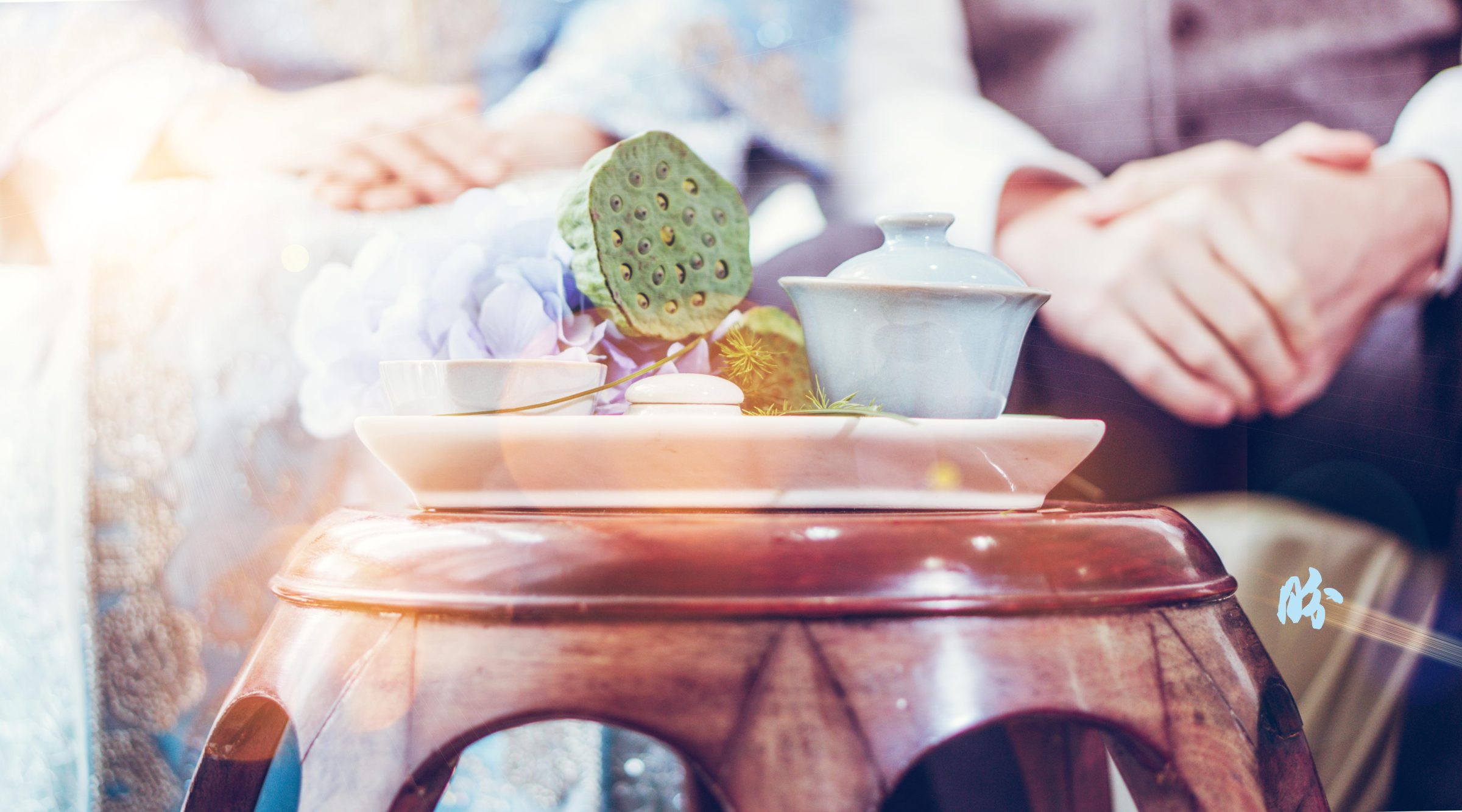
Since I mentioned jade, I would like to clarify that the ancient Chinese refer to pretty stones as jade in general. But the jades they usually refered to are Nephrite jades which have a history of over 5,000 years in Chinese culture. Ancient Chinese did not use Jadeite jade until the last 500 years or so, and even then, the status of Jadeite was quite low.
This is why you would see that they linked porcelain to nephrite jades–because both were rather opaque-looking materials.
The wedding look book

Of course, I am not a cultural revisionist! I do think that traditions are important, so although I’m proposing a different colour palette for Chinese weddings, it can still fit very well into the traditional Tea Ceremony!
The idea of the Guan ware fits this traditional (kind of) Chinese embroidered/embellished wedding dress perfectly! For one, the beads that lined the dress are very similar to the air bubbles that lined the Guan ware surfaces, which apparently is another unique aesthetic of the glaze. Also, there is this formality that is not too overpowering about this set due to the cool light tone.
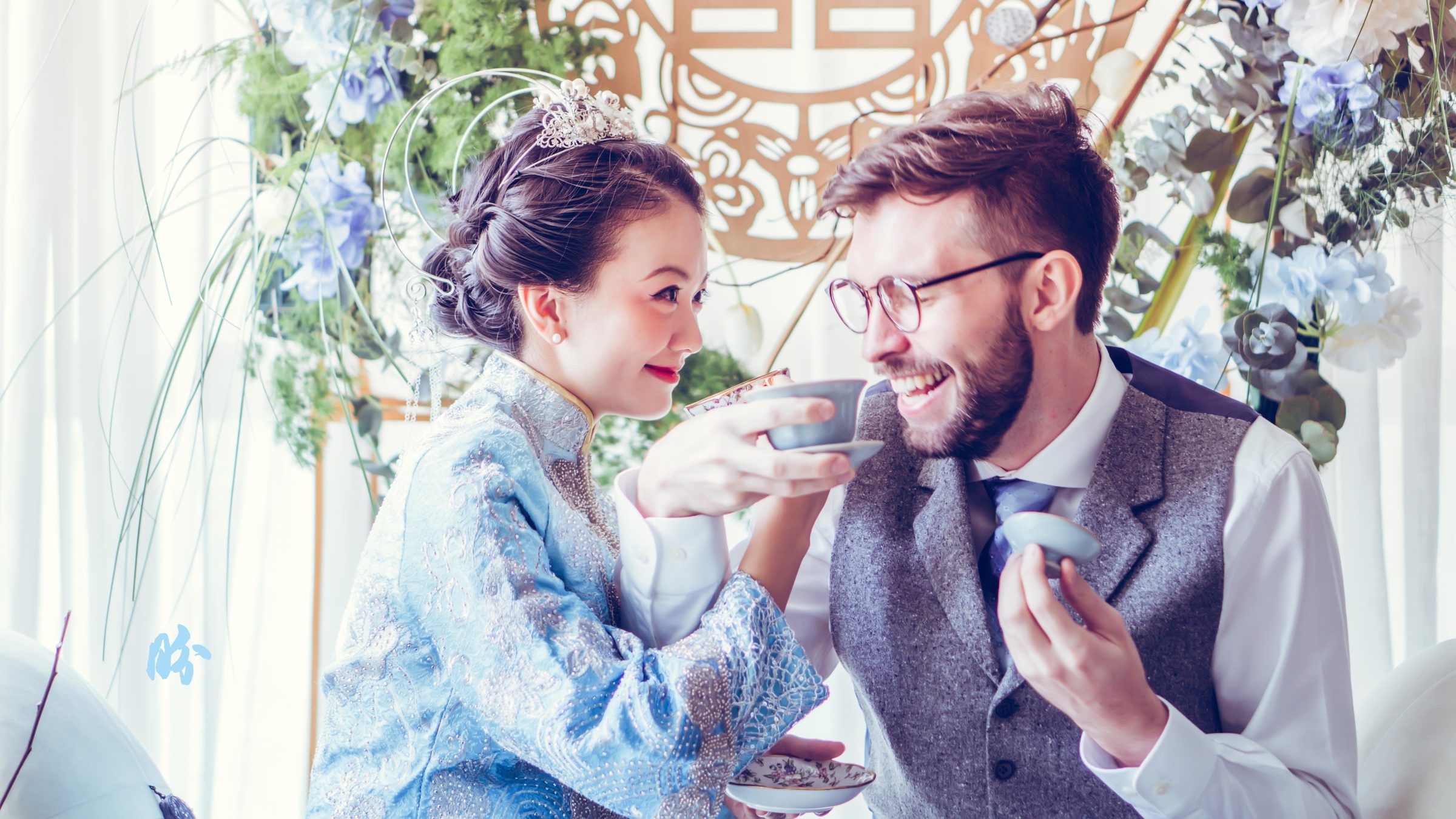
A word of caution to all Chinese brides–don’t wear your hair down if you want to go for a traditional Chinese dress look. Traditionally, women had to have their hair up after the coming of age (around 16 years old) or after they get married (whichever is earlier). So unless you want to look like a XX-year-old virgin refusing to accept your new found status and long-established age, I suggest having them styled up neatly.

I told Jon during brainstorm stage, that the overall colour is like turquoise with a bit of purplish tinge, so naturally, hydrangeas (my favourite flower!) was chosen for this set. The styling of the backdrop and flowers were all by Jon, and he went along with the idea of a formal ceremony that remains somewhat light and fun!
So we had a lot of symmetry in this set (something which you’ll find missing in the rest of the series later on), to express that sense of order which is often associated with the Chinese empire.

Jon also invited a cake artist brand Sherramelts on board for this collab and I think the combination of the round backdrop with the square cake works really well along the ancient Chinese idea of a round heaven and a square earth (天圆地方). You see this aesthetic perpetuating the Chinese culture in many aspects such as their architecture design and layout, their ancient bangles designs etc.
In a way, when a reunion is between heaven and earth, I think it would be considered supremely auspicious and in order from a Chinese perspective!
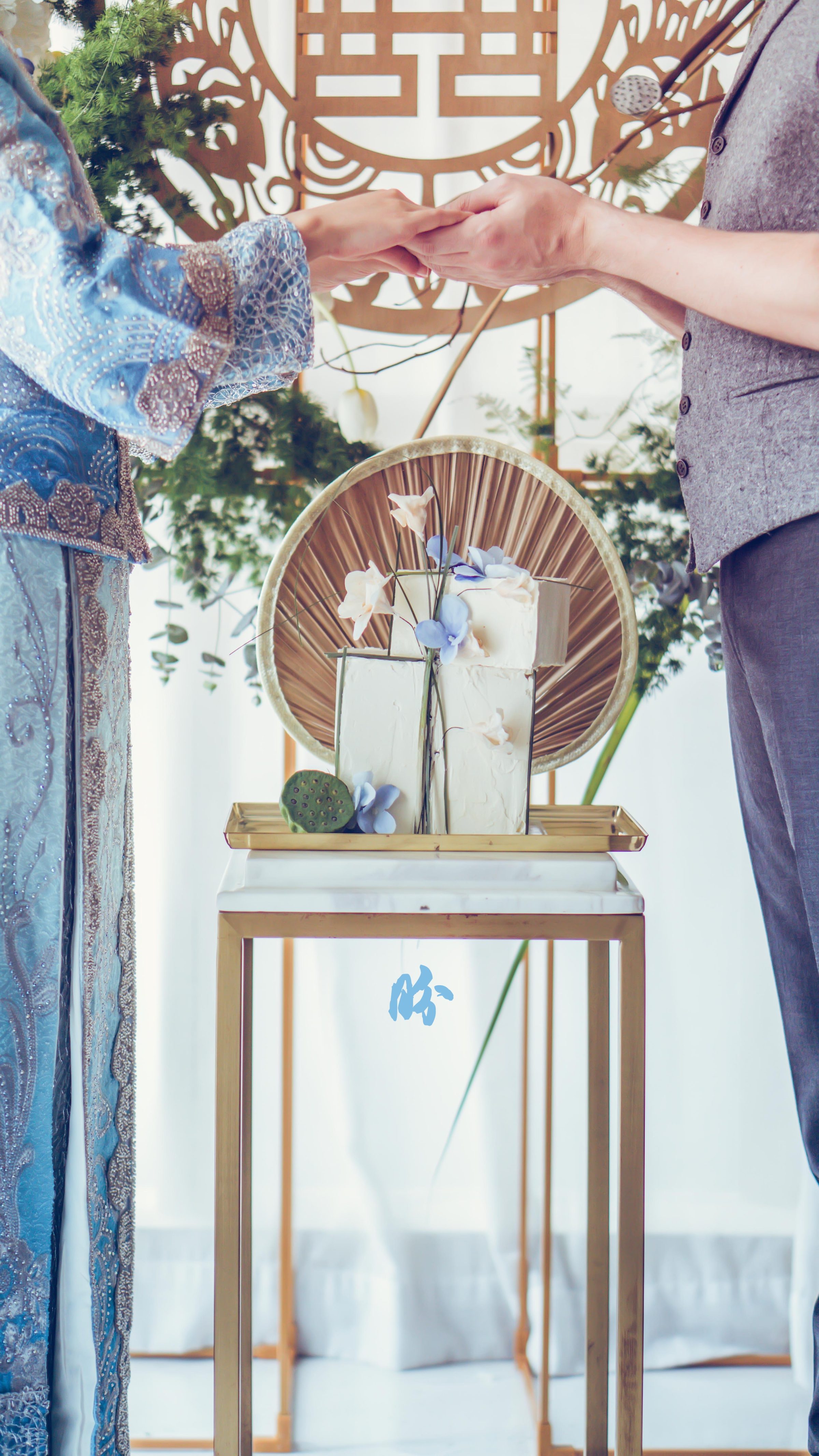
Tea Pairing
Just to complete this entire shoot with a bit of tea, I have also invited Kenny, a Tea sommelier, to recommend the type of tea that would complement the light and gentleness of the Ding wares.
Wuyi yancha, Laocong Shuixian
The Song court highly favoured tribute tea that came from the area of Wuyi in Fujian.
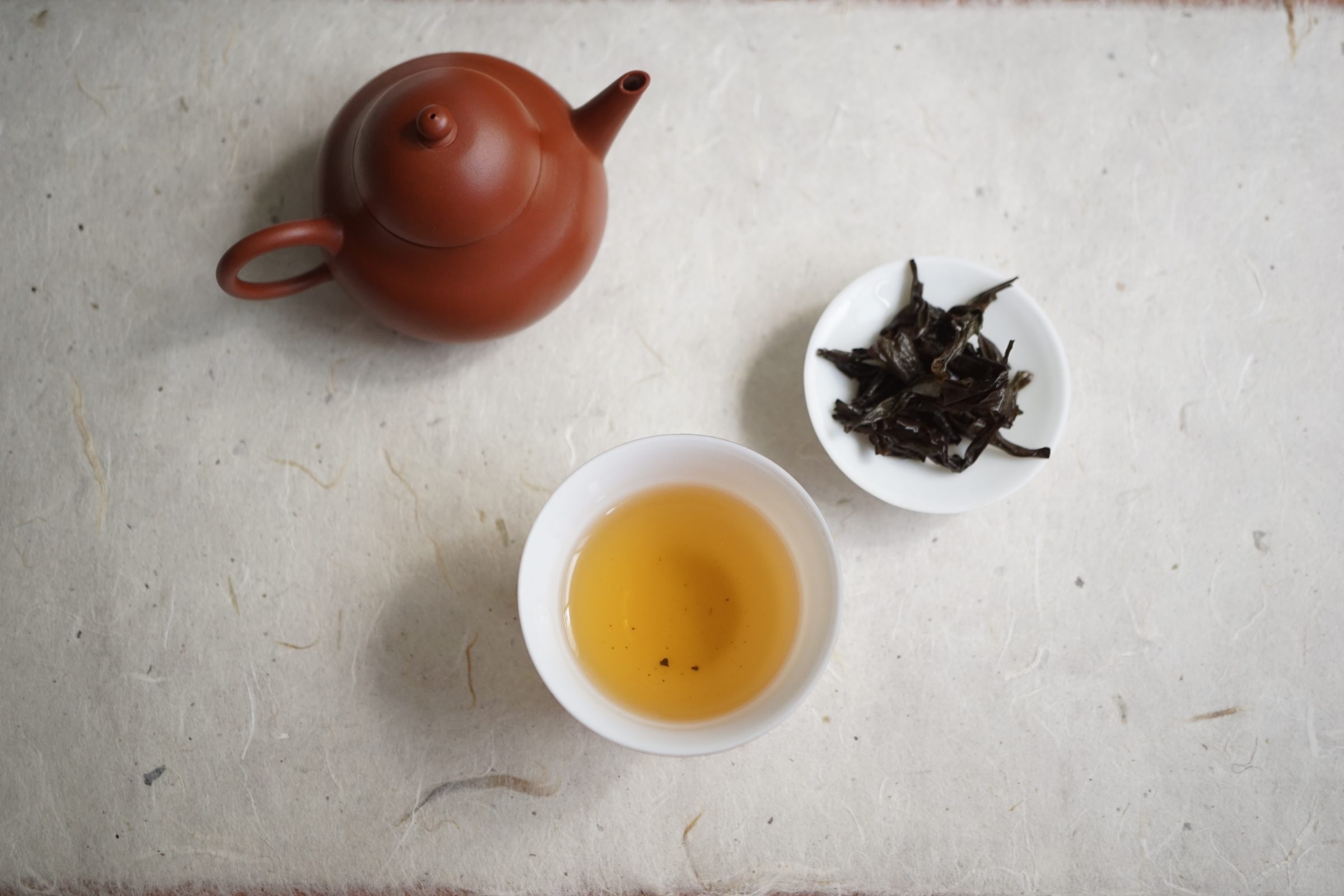
This was clear especially to tea aficionado and poet Su Dong Po, who wrote: 君不見武夷溪邊粟粒芽,前丁後蔡相籠加,爭新買寵各出意,今年鬥品充官茶。Today, Wuyi tea is considered to be some of the finest in the world. Among them, Shuixian from old tea trees is particularly highly prized for its richness and depth — truly an icon of class and finesse in its own right.
Credits/Acknowledgement:
Flowers and styling by @blancstudios.co
Model styling and photography by @hanfugirl
Cake by @Sherramelts
Tea recommendation by Kenny from Teatle-Tattle

Leave a Reply